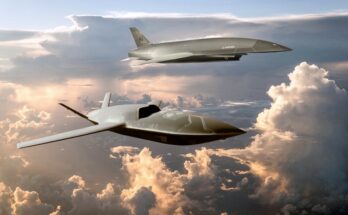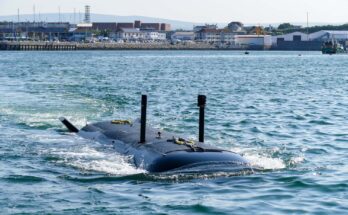
The Russo-Ukrainian War has been effective in showcasing the capability of certain weapon systems. Case in point, the NASAMS, developed by Raytheon and Kongsberg.
This medium-range air defense system uses a modified AIM-120 AMRAAM. Originally, interest in this system was low, especially after the U.S. Army placed only a token order. The program proceeded at a moderate production rate for years but with the risk of termination always hanging over it. This program’s production run may have already ended if not for Russia’s invasion of Ukraine.
The Russo-Ukrainian War is regenerating interest in short- and medium-range air defense systems, especially the more mobile ones. Russia was slowly wearing down Ukraine’s air defense capability, and rapidly depleting its available stockpile of missiles. Western nations quickly began to provide Ukraine with surface-to-air missiles (SAMs), including systems capable of engaging small threats like strike missiles and attack drones.
Although there is no confirmation, Ukraine claims it has a 100 percent success rate with the threats engaged by the NASAMS. Taiwan faces a massive aerial threat from China. Beijing, tired of the slow pace of reunification talks, continues to threaten invasion if Taipei does not agree to accept its rule.
To repel any invasion, Taiwan will need a strong and resilient air defense network. No doubt, Beijing will attempt to suppress Taiwan’s air defense systems. Russia’s inability to dominate the airspace over Ukraine is a major factor in its failure to win a quick victory. To thwart a similar plan by Beijing, Taiwan will supplement its fixed air defense systems with more mobile SAMs – a candidate to meet part of this need is NASAMS.
Demand for the original NASAMS model will probably not last. What the market could see is stronger demand for short- and medium-range SAMs, especially more mobile systems. Furthermore, the Russo-Ukrainian War could ignite greater demand for anti-aircraft cannons or systems that use less expensive interceptors when engaging attack drones and other, similar aerial threats.
Forecast International’s Missile Forecast provides global long-range forecasts for a wide range of missiles, including air-to-air, surface-to-air, strike, anti-armor, surface-to-surface, anti-ship, and anti-radiation systems, both developmental and in production. An annual subscription includes 134 individual reports, most with a 10-year production forecast. Product comes complete with five Market Segment Analyses, covering the markets for: Anti-Tank Missiles; Surface-to-Air Missiles; Anti-Ship Missiles; Air-to-Air Missiles; and Strike Missiles. For more information, click here
For more than 35 years, Larry has been involved in research and analytical work for various Forecast International projects. He has contributed to the Airborne Electronics Forecast and was chief editor on the World Aerospace Weekly newsletter. Larry was directly responsible for the creation of World Weapons Review, a biweekly industry market research publication specializing in weapon systems and related material. He was the creator of Unmanned Vehicles Forecast, launched to cover the growing market for civil and military drones, and was involved in the development of the Airborne Retrofit & Modernization Forecast service. He is currently responsible for the Missile Forecast and for FI's two Unmanned Vehicles Forecast services – Airborne Systems and Land & Sea Systems.





